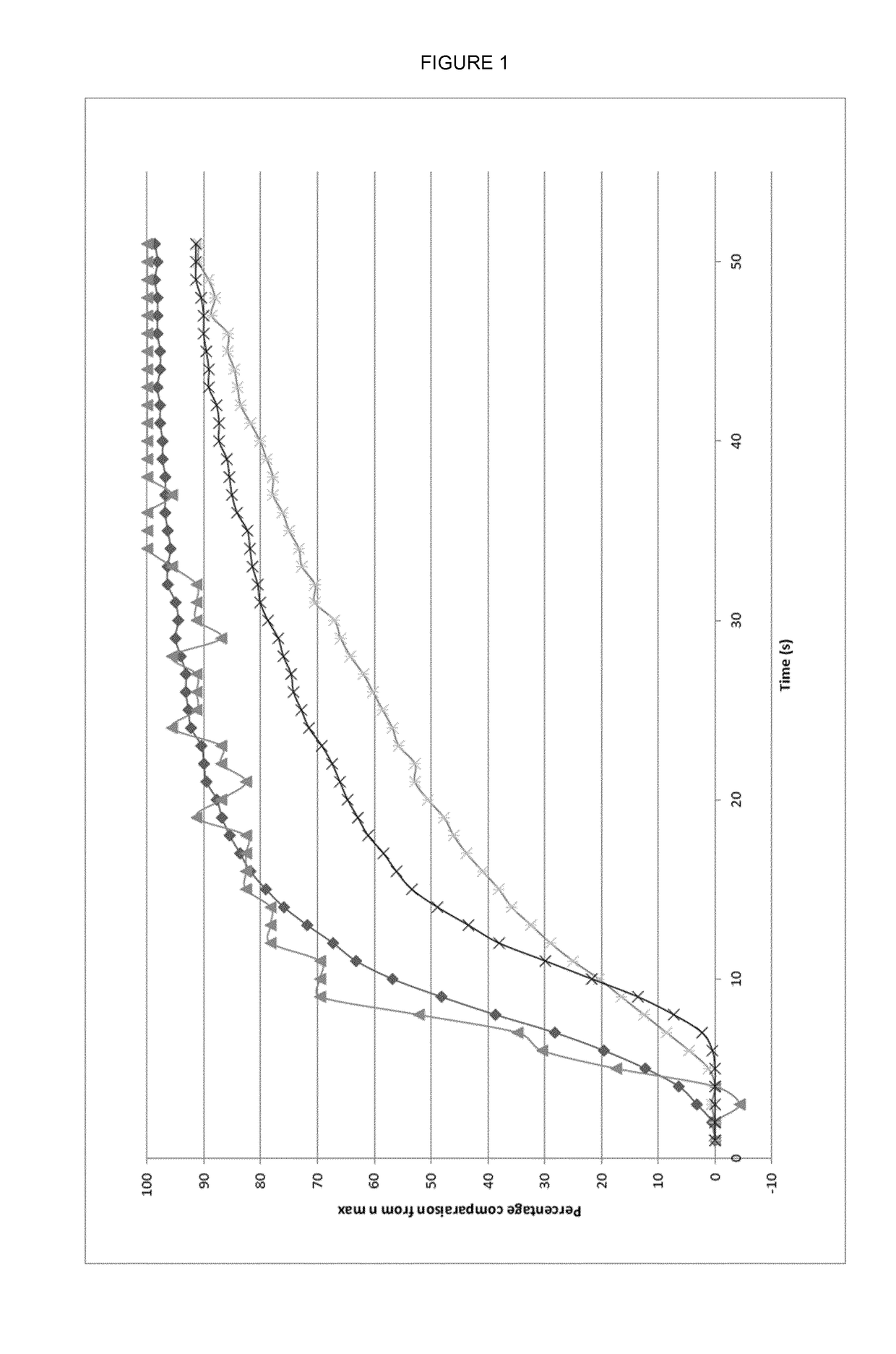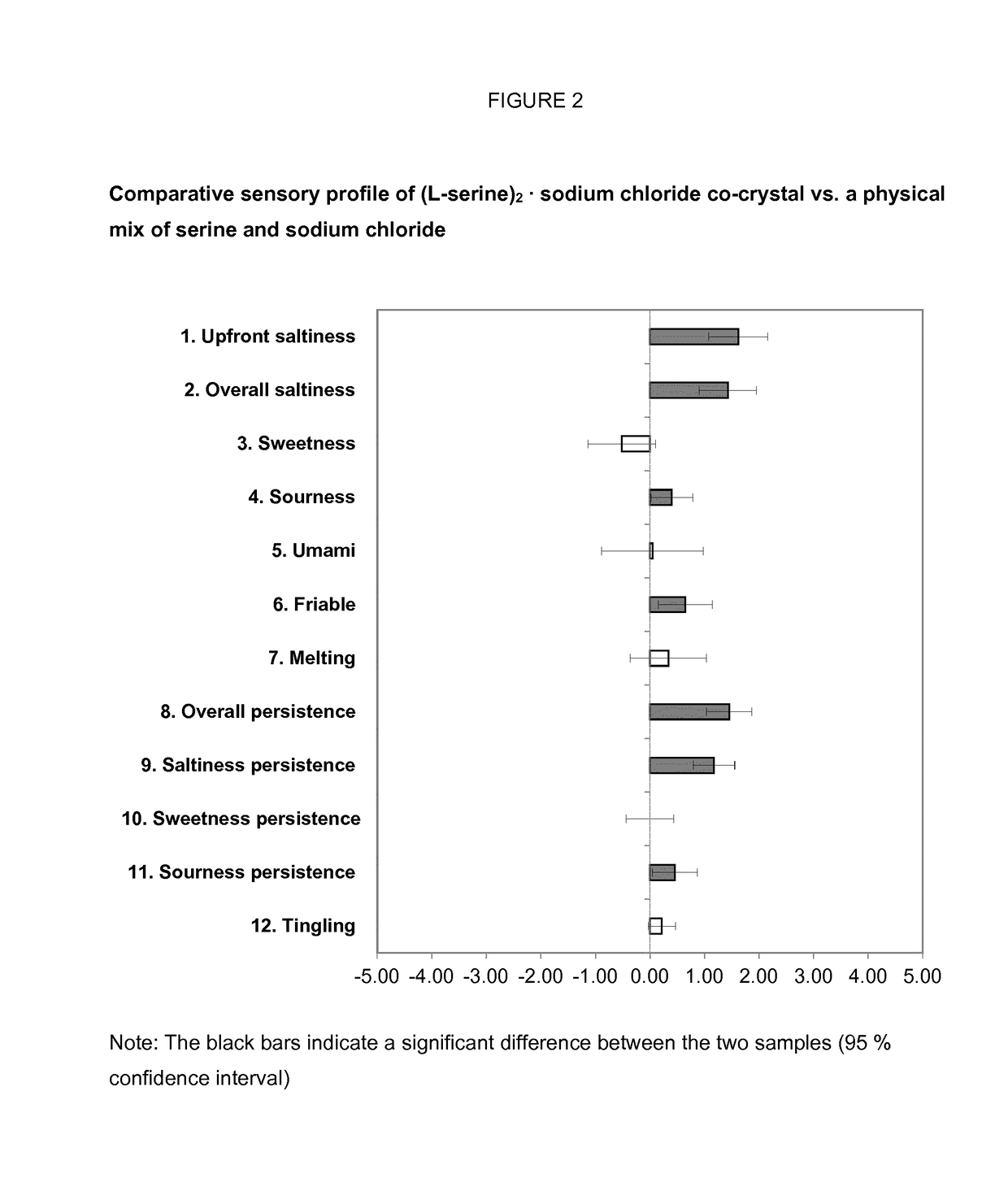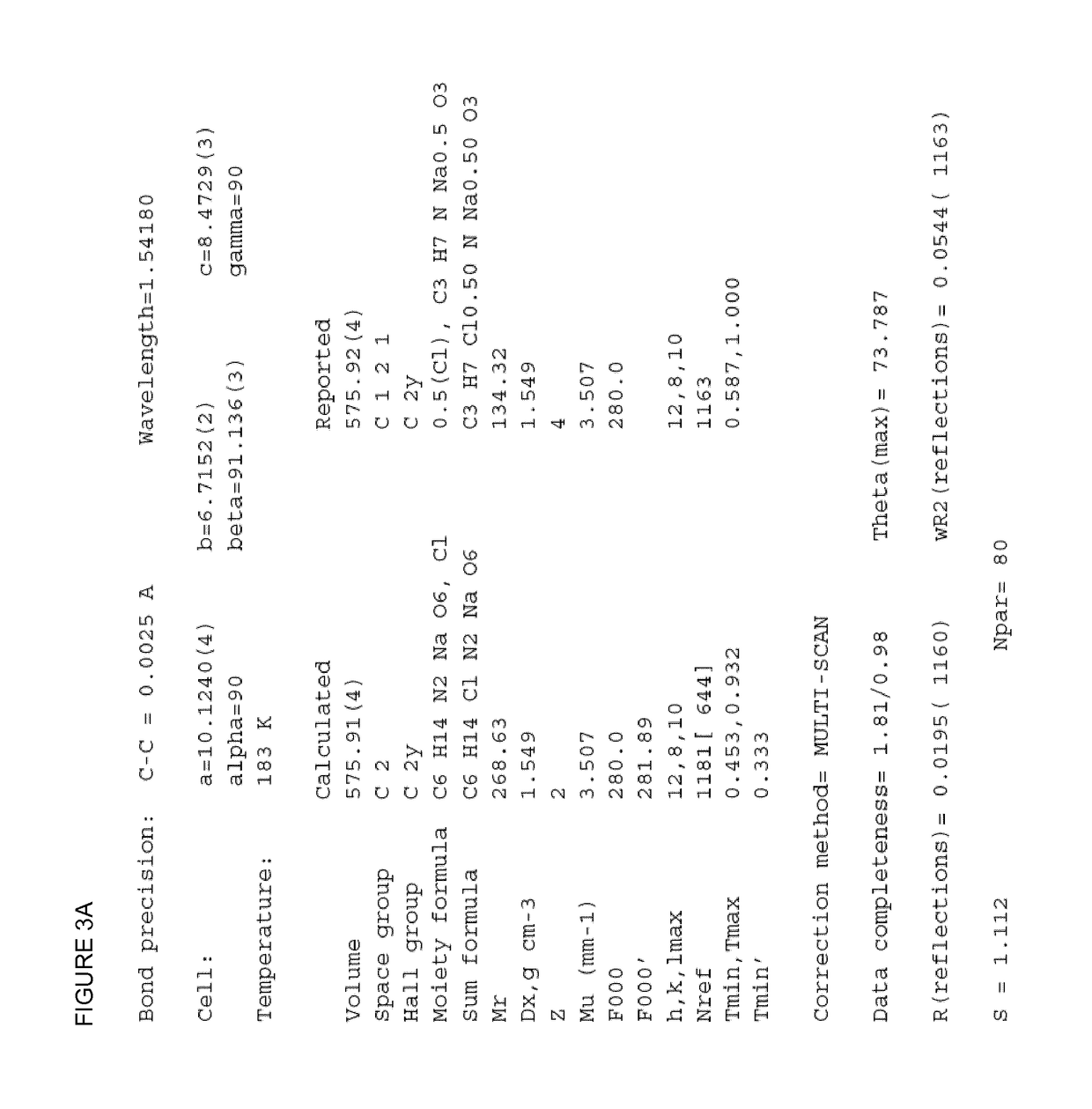Salt composition including serine
a technology of serine and salt, which is applied in the field of crystallized amino acids and sodium chloride, can solve the problems of limited current use of salty foods in food manufacturing, increased risk of hypertension and cardiovascular diseases, and impaired detection of salty tastes, so as to improve the dissolution behaviour and enhance the salty taste
- Summary
- Abstract
- Description
- Claims
- Application Information
AI Technical Summary
Benefits of technology
Problems solved by technology
Method used
Image
Examples
example 1
Synthesis of (L-Serine)2.Sodium Chloride Seed Co-Crystals
[0112]In a 250 mL glass reactor equipped with a magnetic stirrer and a water bath, 30.0 g of sodium chloride and 53.7 g of L-serine were added to 79 mL water at 25° C. (200 rpm). The water bath was set up to 80° C. and the mixture was kept at 58° C. for period of 5 hours. A colourless and homogeneous solution was obtained, after which the temperature was set to 20° C., which allowed for the spontaneous formation of crystals. The temperature was maintained to 20° C. and the crystal growth was allowed to continue for 100 minutes while stirring at 150 rpm. Subsequently, stirring was halted and the suspension was filtered over a glass frit under reduced pressure (Borosilicat glass: 3.3; Porosity: 2; 600 mPa; Büchi Vacuum Pump V-700). The isolated crystals were washed with 10 mL of cold water at room temperature. The solid product was dried at 40° C. under vacuum for 2 hours (Rotavap R-210 Büchi; 12 mPa). The crystalline material w...
example 2
Synthesis of (L-Serine)2.Sodium Chloride Co-Crystals by Direct Crystallisation
[0114]529 mL of water was placed at room temperature (Tset=25° C.) in a 1.2 L thermostatted glass reactor equipped with mechanical bottom stirrer (IKA® 1000 reactor), internal temperature control and a water condenser. While stirring (80 rpm), 200 g of sodium chloride and 358 g of L-serine were added over a period of 10 minutes. The temperature was then set to 75° C. After 180 minutes a colourless and homogeneous solution was obtained. Subsequently the temperature was set to 38° C. and the solution slowly cooled within 30 minutes. At this point, 100 mg of seeding crystals (see Example 1) were carefully added to the solution and the stirring rate was reduced to 30 rpm. Crystallization occurred within the next 50 minutes (formation of a suspension). Then, the temperature was set to 30° C. for 15 hours. In total, crystallization took 15 hours and 50 minutes from the addition of the seeding crystals. Finally, ...
example 3
Mechanochemical Synthesis of (L-Serine)2.Sodium Chloride Co-Crystals
[0115]1.79 g L-serine (17.0 mmol), 1.00 g Sodium Chloride (17.0 mmol) and 154 mg Milli-Q Water (8.5 mmol) were placed in a Retsch MM400 vibratory ball mill and ball-milled at room temperature at a frequency of 15 Hz with one INOX steel ball (diameter 15 mm) for 30 minutes to give the co-crystalline material.
PUM
 Login to View More
Login to View More Abstract
Description
Claims
Application Information
 Login to View More
Login to View More - R&D
- Intellectual Property
- Life Sciences
- Materials
- Tech Scout
- Unparalleled Data Quality
- Higher Quality Content
- 60% Fewer Hallucinations
Browse by: Latest US Patents, China's latest patents, Technical Efficacy Thesaurus, Application Domain, Technology Topic, Popular Technical Reports.
© 2025 PatSnap. All rights reserved.Legal|Privacy policy|Modern Slavery Act Transparency Statement|Sitemap|About US| Contact US: help@patsnap.com



